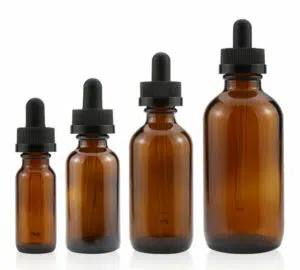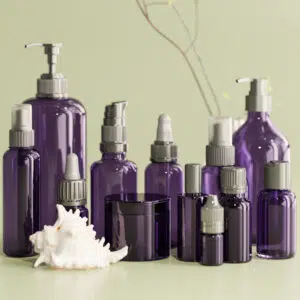In the intricate world of pharmaceuticals, the packaging of a product is not merely a vessel to contain it but a critical element that ensures safety, efficacy, and compliance with stringent regulations. As a pharmaceutical manufacturer or distributor, understanding the nuances of various packaging types can be the key to safeguarding your product’s integrity and enhancing its market appeal. Welcome to a comprehensive exploration of the diverse realms of pharmaceutical packaging – a journey that delves deep into the multifaceted landscape where science meets creativity and functionality intertwine with innovation.
Imagine a realm where every vial, blister pack, or bottle is not just a casing but a shield that guards the potency of life-saving medications, shielding them from external threats while preserving their healing essence. From child-resistant containers to tamper-evident seals, each aspect is meticulously designed to serve a crucial purpose in the realm of pharmaceutical packaging. Join us as we unravel the complexities of this vital facet of the industry and discover how the right choice of packaging for pharmaceutical products can be a silent yet powerful ambassador of quality, safety, and trust. Let’s embark on an enlightening expedition through the myriad options, strategies, and considerations that define the ultimate guide to types of pharmaceutical packaging for your valuable products.

Understanding Different Types of Pharmaceutical Containers: Vials, Bottles, and Ampoules
When it comes to packaging pharmaceutical products, one of the first decisions to make is the type of container to use. Vials, bottles, and ampoules are three common options that serve different purposes and cater to specific needs.
Vials are small glass or plastic containers with narrow openings. They are commonly used for storing liquid medications, such as injectables or eye drops. Vials provide an airtight seal that helps maintain the sterility and potency of the contents. Their small size makes them convenient for single-dose medications or when precise dosage measurements are required.
Bottles, on the other hand, are larger containers typically made of glass or high-density polyethylene (HDPE). They come in various sizes and shapes and can hold both liquid and solid medications. Bottles offer more flexibility in terms of dosage forms and volumes. They often come with child-resistant caps to prevent accidental ingestion by children. The glass pharma packaging that Betterchois supplies is achieved with the Certification of the China National Medical Products Administration.
Ampoules are sealed glass containers that hold a single dose of medication. They are designed for sterile products that need protection from air and contaminants. Ampoules have a breakable neck that is snapped off before use, ensuring the integrity of the contents until they are ready to be administered.
Choosing the right type of container depends on factors such as the medication’s formulation, dosage form, stability requirements, and intended use. It is essential to consider compatibility between the container material and the medication to avoid any interactions or degradation.

Exploring the Role of Blister Packs in Pharmaceutical Packaging
Blister packs have become increasingly popular in pharmaceutical packaging due to their convenience, safety features, and ability to enhance medication adherence. A blister pack consists of individual compartments or cavities that hold a single dose of medication.
Blister packs offer several advantages. Firstly, they provide a barrier against moisture, light, and oxygen, which can degrade the medication. This helps maintain the product’s stability and shelf life. Secondly, blister packs are tamper-evident, meaning any attempt to open or manipulate the packaging is easily detectable. This feature ensures the integrity of the medication and protects against counterfeiting or tampering.
Furthermore, blister packs are user-friendly and promote medication adherence. Each dose is clearly labeled and separated, making it easy for patients to follow their prescribed regimen. The individual compartments also serve as a reminder for patients who need to take multiple medications at different times.
Pharmaceutical companies can customize blister packs with branding elements such as logos, colors, or product information. This not only enhances brand recognition but also provides an opportunity to communicate important details about the medication to patients.

Innovations in Child-Resistant Packaging: Balancing Safety and Accessibility
Child-resistant packaging plays a crucial role in preventing accidental ingestion of medications by children. It is designed to be difficult for young children to open or access while remaining accessible for adults.
Traditional child-resistant packaging often involved complex mechanisms that required significant dexterity and strength to open. However, advancements in packaging technology have led to more user-friendly options without compromising safety.
One such innovation is the use of push-and-turn caps or squeeze-and-turn closures that require a specific combination of movements to unlock. These closures are easy for adults to operate but pose a challenge for young children who lack the necessary coordination.
Another approach is incorporating blister packs into child-resistant packaging. By combining the protective features of blister packs with child-resistant mechanisms on the outer packaging, manufacturers can create a robust solution that ensures both safety and accessibility. Contact Betterchois for more information about child-resistant caps, there is a wide range here.
Pharmaceutical companies need to comply with regulatory requirements regarding child-resistant packaging. By doing so, they not only protect children from accidental ingestion but also demonstrate their commitment to safety and responsible medication use.

Tamper-Evident Seals: Safeguarding Pharmaceutical Products from Contamination
Tamper-evident seals are essential in pharmaceutical packaging to protect products from contamination and ensure consumer safety. These seals provide visible evidence that the drug packaging has been tampered with, indicating a potential compromise of the product’s integrity.
There are various types of tamper-evident seals, including shrink bands, breakable caps, induction seals, and tear strips. Each type offers a unique level of protection and requires specific actions to be removed or broken.
Shrink bands are plastic sleeves that fit tightly around the closure of a bottle or container. They must be torn or cut before accessing the medication. Breakable caps have a ring that breaks upon opening, indicating that the package has been tampered with.
Induction seals are commonly used on bottles or jars with screw-on lids. These seals create an airtight barrier by adhering to the container’s rim when exposed to heat induction. If the seal is broken or missing upon purchase, it serves as evidence of tampering.
Tear strips are often found on blister packs or pouches. They provide a visible indication if someone has attempted to open the package without authorization.
Tamper-evident seals not only protect pharmaceutical products but also build trust among consumers. By visibly demonstrating that a product has not been compromised during storage or transportation, manufacturers instill confidence in their brand and emphasize their commitment to quality and safety.
Sustainable Packaging Solutions for Pharmaceutical Products
In recent years, there has been a growing emphasis on sustainability in all industries, including pharmaceuticals. Sustainable packaging aims to minimize the environmental impact of packaging materials and processes while maintaining product integrity.
One approach to sustainable packaging is the use of recyclable or biodegradable materials. For example, replacing traditional plastic containers with bio-based plastics derived from renewable resources can significantly reduce carbon emissions and dependence on fossil fuels.
Another strategy is optimizing packaging design to minimize material usage without compromising functionality or safety. This includes reducing the size of containers, using lightweight materials, and eliminating unnecessary layers or components.
Pharmaceutical companies can also explore innovative solutions such as compostable blister packs or refillable dispensers. These alternatives offer environmentally friendly options that align with consumer preferences for eco-conscious products.
By adopting sustainable packaging practices, pharmaceutical companies demonstrate their commitment to environmental stewardship and contribute to a greener future.
Compliance and Regulatory Considerations in Pharmaceutical Packaging
The pharmaceutical industry is highly regulated to ensure the safety, efficacy, and quality of medications. Compliance with regulatory requirements is essential in all aspects of pharmaceutical packaging.
Regulatory bodies such as the Food and Drug Administration (FDA) in the United States or the European Medicines Agency (EMA) in Europe set guidelines and standards for packaging materials, labeling requirements, child-resistant features, tamper-evident seals, and more.
Pharmaceutical companies must ensure that their packaging materials are compatible with the medication’s formulation and stability requirements. They must also provide accurate labeling information regarding dosage instructions, warnings, expiration dates, and storage conditions.
In addition to national regulations, international standards such as ISO 13485 for medical devices or ISO 15378 for primary packaging materials provide further guidance on quality management systems specific to the pharmaceutical industry.
Non-compliance with regulatory requirements can have severe consequences, including product recalls, legal penalties, damage to reputation, and compromised patient safety. Therefore, pharmaceutical companies must stay updated on the latest regulations and maintain robust quality control processes throughout the packaging lifecycle.
Customization and Branding Opportunities in Pharmaceutical Packaging
Pharmaceutical packaging offers unique opportunities for customization and branding. Customized packaging not only enhances brand recognition but also communicates important information about the product to consumers.
Pharmaceutical companies can incorporate branding elements such as logos, colors, or taglines on their packaging materials. This helps create a visual identity that distinguishes their products from competitors and fosters brand loyalty among consumers.
In addition to branding, packaging can be customized to cater to specific patient needs or preferences. For example, blister packs can be designed with compartments for different days of the week or times of the day to facilitate medication adherence.
Furthermore, customization extends beyond aesthetics. Packaging can be tailored to accommodate special features such as child-resistant closures or tamper-evident seals while maintaining a cohesive design that aligns with the brand’s image.
By leveraging customization and branding opportunities in pharmaceutical packaging, companies can create a strong market presence and establish a connection with consumers based on trust and reliability.
Tips for the Selection of Strategic Pharmaceutical Packaging
The world of pharmaceutical packaging is a complex realm where science meets creativity and functionality intertwine with innovation. Understanding the different types of containers such as vials, bottles, and ampoules is crucial in selecting the right packaging for pharmaceutical products.
Blister packs offer convenience, safety features, and improved medication adherence. Child-resistant packaging ensures safety while remaining accessible for adults. Tamper-evident seals protect against contamination and build consumer trust. Sustainable packaging solutions contribute to a greener future. Compliance with regulatory requirements is essential for product safety and quality. Customization and branding opportunities enhance brand recognition and consumer loyalty.
By harnessing the power of strategic pharmaceutical packaging, companies can safeguard their products’ integrity, enhance market appeal, and establish themselves as leaders in the industry. The journey through the diverse realms of pharmaceutical packaging is an enlightening expedition that showcases the silent yet powerful role played by pharma packaging in ensuring quality, safety, and trust in the world of pharmaceuticals.